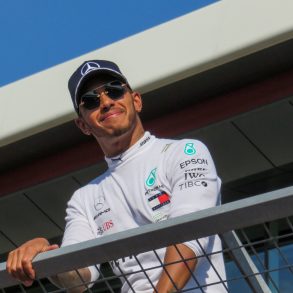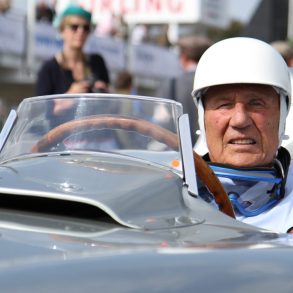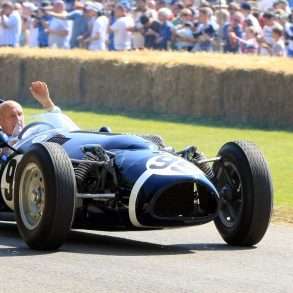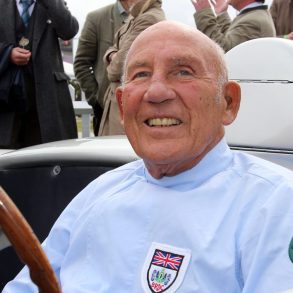Sir Stirling Moss, one of the greatest all-around racing drivers of his generation, was honored at the recent FIA Gala awards with the presentation of the FIA Gold Medal for Motor Sport.
The FIA Gold Medal, which was presented to Sir Stirling in a VIP pre-awards ceremony at the Monaco Sporting Club, is awarded to an individual who, either through exceptional success, or outstanding effort, has made a substantial contribution to motor racing. The recipient is selected by the FIA Academy, which is made up of eight senior members of the FIA and its national automobile clubs.
Sir Stirling Moss said: “In my career I had numerous Grand Prix wins, 16 Formula One race victories and was runner-up in the World Championship four times, but this is the first FIA award that I have ever won. As such, this award means a lot to me and I am very proud to receive it.”
Max Mosley, FIA president, said: “There are few drivers in the history of motor sport who have been as deserving of this award as Sir Stirling. It is not just his remarkable success across all categories of racing that stands him apart but also his continuing contribution to the promotion of motorsport.”
Sir Stirling is arguably the best driver never to win the FIA Formula One World Championship. But it was his talents across all disciplines in motorsport, with famous sports car victories matching his F1 achievements, which made him one of the greatest drivers of all time.
Nicknamed “Mr. Motor Racing,” his early career rise was swift and soon he was driving works cars for Jaguar and HWM. In 1955, he was signed by Mercedes-Benz to partner F1 World Champion Juan Manuel Fangio. That year he shadowed the great Argentine in most races, beating him to win the British Grand Prix. Incredibly, in the same year, he also won the Mille Miglia, the Targa Florio and the Tourist Trophy, all legendary sports car races.
For four years he would finish runner-up in the World Championship and would go on to lead the Maserati and Vanwall teams. He also continued to race saloon and sports cars, driving more than 80 different types of cars throughout his career.
In the late ’50s and early ’60s, he led the changeover to rear-engined F1 cars, achieving the first victory for such cars at the 1958 Argentine GP. A near-fatal accident ended his career in 1962, but he never lost his passion for the sport. He has remained an ambassador for motor racing ever since and continues to promote the sport and compete in historic racing competitions around the world.










